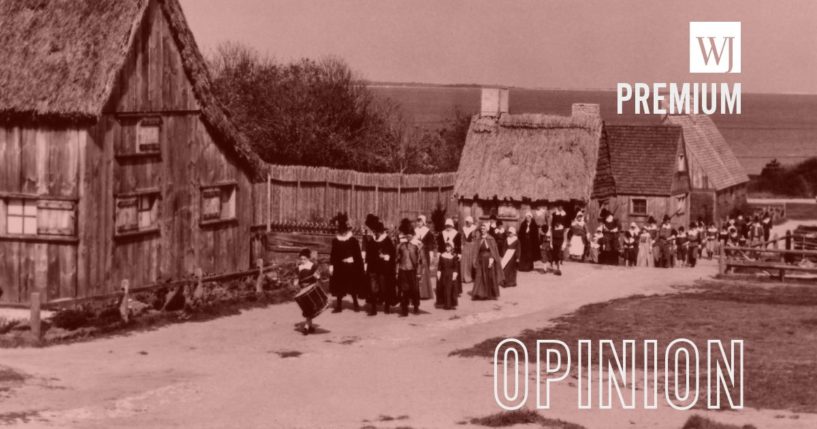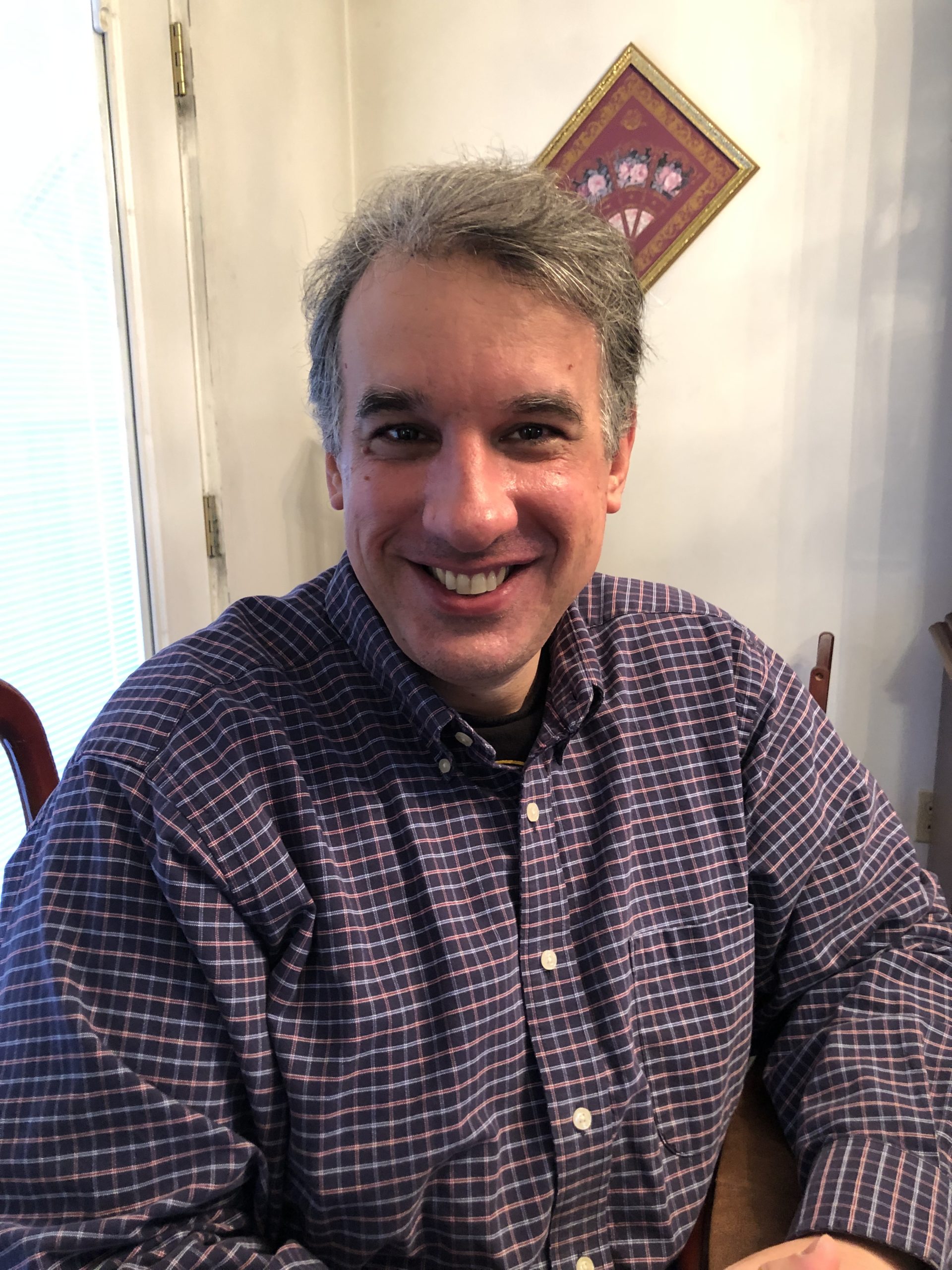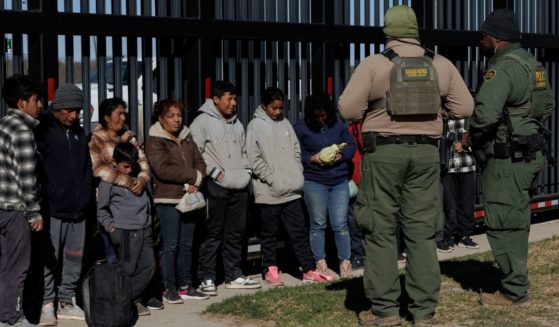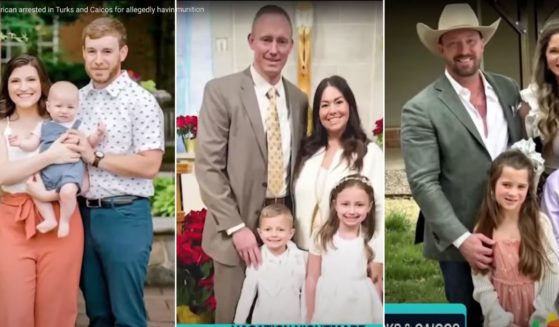
This Thanksgiving, Give Thanks for American Colonialism
In 1803, President Thomas Jefferson envisioned a peaceful and prosperous future for American Indians.
“[I]n truth the ultimate point of rest & happiness for them is to let our settlements and theirs meet and blend together, to intermix and become one people, incorporating themselves with us as citizens of the US,” Jefferson wrote.
Alas, the nineteenth century did not unfold as the author of the Declaration of Independence had hoped. U.S. federal agents lied, broke treaties and made war. Indian Removal — symbolized by the shameful “Trail of Tears” in 1838 — wrote the epitaph for Jefferson’s vision of harmonious assimilation.
Why, therefore, should we give thanks to American colonialism? And how can we do this without trampling the graves of its Indian victims?
The answer to the second question is simple. Giving thanks to American colonialism does not require ignoring or even extenuating those historical injustices. Every horrific thing U.S. citizens and their colonial ancestors did to their Indian neighbors remains worthy of condemnation.
On the other hand, those horrors and injustices tell part of the story, but they do not tell all of it. Here, then, is one crucial reason why American colonialism gives cause for thanks: It presents us with a complex story.
Once we appreciate this complexity, we have inoculated ourselves against the shallowest and most dishonest intellectual framework ever built: the binary Marxist narrative in which all human beings fit into either an “oppressor” or an “oppressed” category.
Thus, the mere fact of American colonialism’s complexity allows us to refute Marxism’s “oppressor-oppressed” narrative. And that alone constitutes ample cause for gratitude.
Furthermore, the most significant details of that complex story present us with a second crucial reason for giving thanks. In short, things could have turned out much differently — and potentially much worse.
To fully understand this second reason for gratitude, however, we must examine three of those significant details.
First, when we refer to “American colonialism” in the traditional Thanksgiving context — Squanto, the Pilgrims and so forth — we mean primarily the people of the 13 British mainland North American colonies who eventually came together in 1776 to form the United States.
This is an important point. It reminds us, for instance, that not all European colonizers came from the same places or shared the same ideas and interests. In the Old World, they fought one another, and they would do so again in the New. Europeans, in short, did not think of themselves as Europeans.
In like manner, Indians did not think of themselves as Indians. They belonged to tribes, nations and confederations. Likewise, they fought one another long before Europeans arrived and would continue to do so long afterward.
With this in mind, instead of “Europeans” and “Indians” we should think in terms of people from different places with different ideas and interests, belonging to different tribes, etc.
In this context, the agents of American colonialism — those English and later British settlers whose descendants created the United States — appear as only one among many groups of North American actors.
Second, depending on the date we choose as our starting point, those English settlers might look comparatively insignificant. At a minimum, they certainly would not strike us as a sure bet to emerge triumphant and become progenitors of a continental republic.
Take the year 1650, for instance — a relatively late date in the history of colonization. Were we to project forward from that date and guess which European colonial power would win control of North America, we would have had little reason to guess the English. New Spain lay to the south and New France to the north. Dutch colonists had established themselves in the Hudson River Valley.
England, meanwhile — emerging from a civil war that ended in the execution of King Charles I in 1649 — had only the Chesapeake colonies of Virginia and Maryland to the south of the Dutch and Puritan New England to their north.
Thus, American colonialism did not begin from a position of strength.
Third, in their relations with neighboring Indians, English (and later British) colonists had such a variety of experiences as to defy any simple narrative.
Again, Indians did not think of themselves as Indians, so they did not all behave the same way. This point is so crucial to destroying the “oppressor-oppressed” narrative that it requires some elaboration.
Take, for instance, the Indians of Virginia — England’s oldest mainland North American colony. When Englishmen arrived and built Jamestown in 1607, they encountered a local Indian confederacy led by Powhatan, the paramount chieftain.
A shrewd diplomatic character, Powhatan sought primarily to contain the tiny English settlement. He treated the new arrivals as tributary, much like he would treat any other weaker tribe. In 1613, the colonists enlisted the help of one such weaker Indian tribe to gain leverage over Powhatan by kidnapping his daughter Pocahontas.
After Powhatan’s death around 1618, however, his younger brother Opechancanough became paramount chieftain. On Good Friday in the year 1622 — after long and secret preparation — Opechancanough launched a surprise attack that killed 347 English settlers. Jamestown survived thanks to a warning from a sympathetic Indian boy.
Thus, two brothers — both paramount chieftains — pursued very different policies toward the English. One group of Indians lured Pocahontas to her capture. Another Indian boy probably saved the Virginia colony.
In such stories, where do we find “oppressor” and “oppressed”?
Meanwhile, in New England, colonists also encountered Indians who did not behave like members of a monolithic group.
In 1675, for instance, the Wampanoag chief Metacomet (aka “King Philip”) allied with the Narragansetts and other local tribes. Together, they launched a war that inflicted heavy casualties and terrorized western Massachusetts.
New England survived, however, thanks to in part to its Mohegan, Pequot and especially Mohawk allies. The Mohawk, in fact, formed part of the powerful Iroquois Confederacy, which maintained close ties with the English.
King Philip’s War of 1675-76 constituted nothing less than an Indian civil war. It decimated the Indian population of New England.
Again, where do we find “oppressor” and “oppressed”?
England’s Restoration Era (1660-85) colonies also had different experiences.
On one hand, William Penn’s “holy experiment” of Pennsylvania, founded in 1681, maintained peaceful relations with Indians. Penn made treaties and kept all of them.
Those peaceful relations continued until December 1763, when a group of Pennsylvania vigilantes known as the “Paxton Boys” — their paranoia and hatred inflamed by Indian violence on the distant frontier — slaughtered a group of peaceful Conestoga Indians who had lived among the English for decades.
This terrible massacre divided the whites. Some tried to justify the vigilantes, while others rallied around the surviving Indians and gave them protection.
In January 1764, Benjamin Franklin offered a scathing indictment of the Paxton Boys and their tortured way of thinking. “If an Indian injures me, does it follow that I may revenge that Injury on all Indians?” Franklin wrote.
Indeed, “The only Crime of these poor Wretches seems to have been, that they had a reddish brown Skin, and black Hair; and some People of that Sort, it seems, had murdered some of our Relations. If it be right to kill Men for such a Reason, then, should any Man, with a freckled Face and red Hair, kill a Wife or Child of mine, it would be right for me to revenge it, by killing all the freckled red-haired Men, Women and Children, I could afterwards any where meet with.”
Thus, in Pennsylvania, whites battled whites over the fate of peaceful Indians.
On the other hand, English settlers in Carolina — divided North from South in 1712 — pitted Indian against Indian for profit.
Historian Alan Gallay’s outstanding book, “The Indian Slave Trade: The Rise of the English Empire in the American South, 1670-1717” (2002), explained how English Carolinians acquired Indian slaves. In short, they sold guns to other Indians and paid them to prey on weaker tribes.
Then, having procured Indian slaves, English Carolinians often traded them to Barbadian planters in exchange for African slaves. When those African slaves ran away in Carolina, Indians with guns served as fugitive slave catchers.
We could fill volumes by multiplying examples from across the American colonies. Indians appeared on every side — on all sides, in fact — of every conflict.
Indeed, only at the highest level of generalization does history support depictions of “Europeans” as winners and “Indians” as losers. Still, less does it support an “oppressors vs. oppressed” narrative along those lines.
Rather than judging everything in binary terms, we should instead compare the result of American colonialism with what might have occurred had things not unfolded the way they did.
England’s North American settlements, for instance, might not have grown in strength relative to those of their European rivals. The French, Spanish or Dutch might have prevailed in the long run.
Had that occurred, how might North America have looked for the last two-and-a-half centuries? What kind of states — enjoying what civil liberties and what level of material prosperity — might have emerged?
Given what we now know about the subsequent history of each nation, do we have reason to prefer French, Spanish or Dutch ascendancy in North America to that of the English and later the Americans who emerged from those English settlements?
Thus, we should give thanks for American colonialism, In fact, we might even extend some of that gratitude to the English settlers’ Indian allies.
Truth and Accuracy
We are committed to truth and accuracy in all of our journalism. Read our editorial standards.












